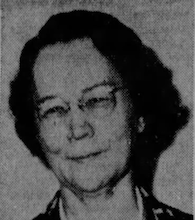Related Research Articles

North Carolina is a state in the Southeastern region of the United States. The state is the 28th largest and 9th-most populous of the United States. It is bordered by Virginia to the north, the Atlantic Ocean to the east, Georgia and South Carolina to the south, and Tennessee to the west. In the 2020 census, the state had a population of 10,439,388. Raleigh is the state's capital and Charlotte is its largest city. The Charlotte metropolitan area, with a population of 2,595,027 in 2020, is the most-populous metropolitan area in North Carolina, the 21st-most populous in the United States, and the largest banking center in the nation after New York City. The Raleigh-Durham-Cary combined statistical area is the second-largest metropolitan area in the state and 32nd-most populous in the United States, with a population of 2,043,867 in 2020, and is home to the largest research park in the United States, Research Triangle Park.

Raleigh is the capital city of the state of North Carolina and the seat of Wake County in the United States. It is the second-most populous city in North Carolina, after Charlotte. Raleigh is the tenth-most populous city in the Southeast, the 41st-most populous city in the U.S., and the largest city of the Research Triangle metro area. Raleigh is known as the "City of Oaks" for its many oak trees, which line the streets in the heart of the city. The city covers a land area of 147.6 sq mi (382 km2). The U.S. Census Bureau counted the city's population as 467,665 in the 2020 census. It is one of the fastest-growing cities in the United States. The city of Raleigh is named after Sir Walter Raleigh, who established the now-lost Roanoke Colony in present-day Dare County.

Cary is a town in Wake and Chatham counties in the U.S. state of North Carolina and is part of the Raleigh–Cary, NC Metropolitan Statistical Area. According to the 2020 Census, its population was 174,721, making it the seventh largest municipality in North Carolina, and the 148th largest in the United States. In 2021, the town's population had increased to 176,987.

Cameron A. Morrison was an American politician and the 55th governor of the U.S. state of North Carolina from 1921 to 1925.
Tar Heel is a nickname applied to the U.S. state of North Carolina. It is also the nickname of the University of North Carolina athletic teams, students, alumni, and fans.

The News & Observer is an American regional daily newspaper that serves the greater Triangle area based in Raleigh, North Carolina. The paper is the largest in circulation in the state. The paper has been awarded three Pulitzer Prizes; the most recent of which was in 1996 for a series on the health and environmental impact of North Carolina's booming hog industry. The paper was one of the first in the world to launch an online version of the publication, Nando.net in 1994.
The Aberdeen and Asheboro Railroad (A&A), known locally as "Page's Road," was the conglomeration of two previous railroads built by the Page family of Aberdeen, North Carolina, at the turn of the 20th century. The railroad ran 56 miles (90 km) to connect its namesake cities with a 20.75-mile long (33.39 km) branch connecting Biscoe to Troy and Mount Gilead and another branch connecting West End to Jackson Springs.

James Hunter Young was an American soldier and politician from North Carolina. He was a colonel in the Third North Carolina Regiment during the Spanish–American War and served in the North Carolina House of Representatives.

Paul Barringer (1778–1844) was a North Carolina politician, businessman and military veteran of the War of 1812. General Barringer served in the North Carolina House of Commons and in the North Carolina Senate, representing Cabarrus County. He was at first a Federalist and later a Whig.

Margaret Wake Tryon was an English heiress and the wife of William Tryon, who served as the Colonial Governor of North Carolina and the Colonial Governor of New York. The namesake of Wake County in North Carolina, she is one of three women, along with Charlotte of Mecklenburg-Strelitz and Virginia Dare, to have a North Carolinian county named after her. She was known for her interest in military strategy, which was controversial for upper-class women of her time.

The Carolina Watchman was an American weekly newspaper published in Salisbury, North Carolina, from 1832 to 1937. It variously supported the Whig, Democratic, and Populist parties, as well as the Confederacy during the Civil War. For a few years, it was mostly politically independent and known as the Watchman & Old North State.
The North Carolina Debutante Ball, also known as the Terpsichorean Society Debutante Ball, is an annual debutante ball held in Raleigh, North Carolina. The ball, hosted by the Terpsichorean Club of Raleigh, is the oldest and most prestigious debutante ball in North Carolina. Originally organized in 1923 as the Raleigh Fall Festival, the formal debutante ball formed in 1927 with the founding of the Terpischorean Club. The ball is held every year over Labor Day weekend in downtown Raleigh.

Alice Harper Willson Broughton was an American civic leader who served as the First Lady of North Carolina from 1941 to 1945 as the wife of Governor J. Melville Broughton. She and her husband were the first governor and first lady from Wake County to live in the North Carolina Executive Mansion. During World War II she was active in the war effort, promoting victory gardens across the state and establishing one at the governor's mansion, christening liberty ships including the SS Zebulon B. Vance and the SS Donald W. Bain, and donating rubber to the armed forces.

Carrie Lougee Broughton was an American librarian who served as the fourth State Librarian of North Carolina from 1918 to 1956. She was the first woman to serve as State Librarian and the first woman to serve as the head of a state department in North Carolina.

Matilda Bradford "Tillie" Ehringhaus was an American civic leader who, as the wife of John C. B. Ehringhaus, served as First Lady of North Carolina from 1933 to 1937. Since her time in the North Carolina Executive Mansion was marked by the Great Depression, she made budget cuts and adaptations around the mansion to save money for the state, including having the wattage of the chandeliers lowered so that the electric bill would not exceed monthly expenses. As first lady, she hosted musical salons and was noted for her beauty and charm. After her husband's death, Ehringhaus co-edited the North Carolina Almanac and State Industrial Guide and, in 1952, served as an alternate delegate to the Democratic National Convention.

Margaret Elizabeth Hoey was an American civic leader and political hostess who served as the First Lady of North Carolina from 1937 to 1941. She was part of the "Shelby Dynasty" and is the only North Carolinian first lady to be the wife of one governor, Clyde R. Hoey, and the sister of another governor, Oliver Max Gardner. While serving as first lady, Hoey focused on issues related to women's roles and children's welfare, advocated for highway beautification across the state, and established a green house for exotic plants at the state penitentiary.

Willie Virginia Otey Kay was an African-American dressmaker. She was known for making wedding dresses and debutante gowns for almost sixty years, becoming one of the most sought-after designers for women's formalwear in North Carolina. Kay began her dressmaking business during the Jim Crow Era, catering to both black and white clientele. She dressed young women being presented to society at the all-white North Carolina Debutante Ball and the all-black Alpha Kappa Alpha Debutante Ball, often attending the balls as a guest. In 1935, McCall's did a story on Kay and her work. In 1951, one of Kay's debutante gowns was featured on the cover of Life. Her work was also featured in The News & Observer and, in 2016, the North Carolina Museum of History presented an exhibit on her life. Kay was the mother of civil rights activist June Kay Campbell and the grandmother of politicians Ralph Campbell Jr. and Bill Campbell.
The Caucasian (1884–1913) also published as The Daily Caucasian in 1895, was a newspaper in North Carolina which operated from 1884 to 1913. Established as a Democratic Party aligned paper, it became Populist with the era of fusion politics. The paper relocated several times including to Raleigh, the state capitol.
References
- ↑ National Endowment for the Humanities. "The Carolinian". Chronicling America. U.S.: Library of Congress. Archived from the original on February 20, 2020. Retrieved July 16, 2020.
- ↑ The Carolinian. The Carolinian. WorldCat. 1920. OCLC 11774223 . Retrieved July 16, 2020.
- ↑ Mobley, Joe A. (November 27, 2009). Raleigh: A Brief History. Arcadia Publishing. ISBN 9781614232964. Archived from the original on June 15, 2020. Retrieved June 14, 2020– via Google Books.
- ↑ Kulikowski, Jennifer A.; Peters, Kenneth E. (June 14, 2002). Historic Raleigh. Arcadia Publishing. ISBN 9780738514406. Archived from the original on June 26, 2020. Retrieved June 14, 2020– via Google Books.
- ↑ "Paul R. Jervay, Jr". NC Heritage Calendar. Archived from the original on April 22, 2020. Retrieved June 14, 2020.
- 1 2 Gershenhorn, Jerry (February 6, 2018). Louis Austin and the Carolina Times: A Life in the Long Black Freedom Struggle. UNC Press Books. ISBN 9781469638775. Archived from the original on June 14, 2020. Retrieved June 14, 2020– via Google Books.
- ↑ Godwin, John L. (June 14, 2000). Black Wilmington and the North Carolina Way: Portrait of a Community in the Era of Civil Rights Protest. University Press of America. ISBN 9780761816829. Archived from the original on June 14, 2020. Retrieved June 14, 2020– via Google Books.
- ↑ "Newspapers Part 4: Changing Technologies, New Voices, and the Trend toward Corporate Ownership | NCpedia". www.ncpedia.org. Archived from the original on June 14, 2020. Retrieved June 14, 2020.